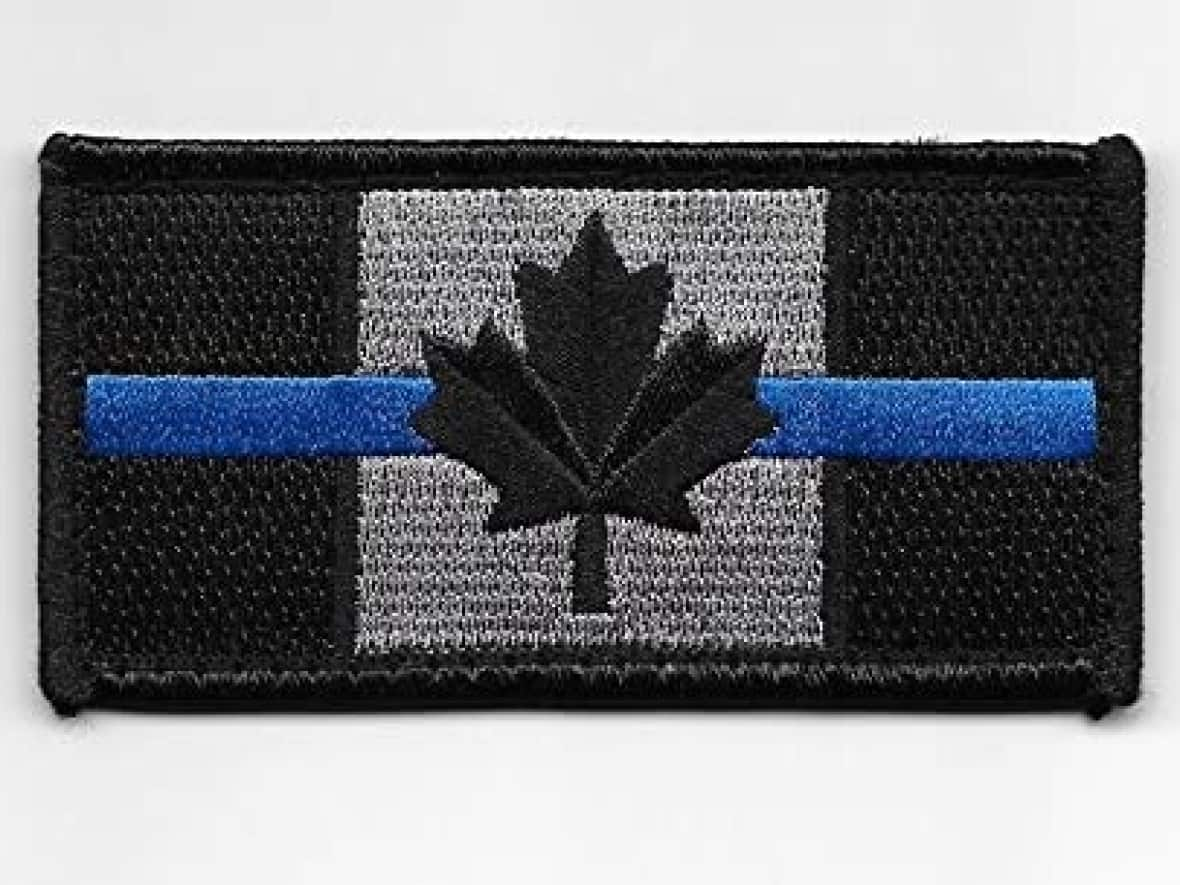Calgary police union 'reluctantly' directs officers to remove thin blue line patch from uniforms

The Calgary Police Association has "reluctantly" directed its members to remove the thin blue line patches from their street uniforms while declaring victory in other areas of negotiation with the police commission, CBC News has learned.
The Calgary Police Commission initially told officers to remove the patches starting March 31. But the union representing more than 2,000 members pushed back, sending out patches and pins and issuing a directive to defy the order.
CBC News has obtained a copy of an email sent to officers by association president Johnny Orr in which he rescinds the union's recommendation to wear the controversial symbol after several town hall meetings and in consultation with lawyers.
"We reluctantly recommend you remove the TBL [thin blue line] patches and comply with [the commission's] order," wrote Orr.
"While we know that removing the patch is a tough pill to swallow, we believe that you have achieved several 'wins.'"
Dress uniforms, plainclothes officers
Those "wins" include the allowance to keep the patches on dress uniforms "to show remembrance for the fallen on those occasions." It's an acknowledgement, says Orr, that the patch is "not a hate symbol."
"We would be the first major police service in the country to do so and, in turn, would lead the way for all police services across the country to follow suit."
The police association says while it still "vehemently" disagrees with the commission's decision in relation to the patch, the grace period for enforcing compliance is running out.
"We strongly believe that if we continue to openly defy the order, discipline will be forthcoming," said Orr who explained the discipline is likely to lead to suspensions and other "hardship" and could impact patrol.
"Putting Calgarians' safety at risk, which is something none of us are willing to do," wrote the association president.
Symbol has ties to white nationalist movements
For many police officers, the Canadian flag patch with the thin blue line through it represents a way to honour officers who have died in the line of duty. It's particularly poignant in Calgary following the 2020 death of Sgt. Andrew Harnett.
But during its consultation process over the past year, the commission found the patch evokes deep, negative feelings from some members of the community, having been linked to white nationalist movements and used at counter-protests against the Black Lives Matter movement.
But the March order handed down from the commission was about more than the patch. It pushed tensions to the boiling point between the commission and the police service.
In his letter to members, Orr said the union "felt strongly" that political interference from the commission "was playing a role in the anti-police movement."
"A few [commission] members were regularly spewing anti-police rhetoric and misinformation on social media," said Orr of some commission members.
Concern commission members slandering policing
Another gain in negotiations from the police association perspective is the in-the-works development of a social media policy and code of conduct policy for commission members so rule breakers could be held accountable "should anyone slander our members or the policing profession in the future."
The meetings that took place between the Calgary Police Service (CPS), police association, executive, commission and senior officers association were productive, according to Orr, with the commission "willing to continue dialogue to repair the relationship."
Coun. Gian-Carlo Carra has been one of the most vocal commission members against the patch, calling it a "known hate symbol" and suggesting that members who defied the commission order have a "sense of entitlement."
Orr said it became clear during the consultation process over the past six weeks that the commission was "firm" in its direction for removal of the symbol from everyday uniforms.
"It was non-negotiable from their perspective," said Orr.
But he encouraged plainclothes officers to continue to wear the thin blue line pin provided by the union.
Orr says the association will continue to work with the chief and commission on the details — placement and size — involving wearing the pins on dress uniforms.
Shawn Cornett, chair of the Calgary Police Commission, said at a news conference on Wednesday that the commission's directive that on-duty officers remove the patch stands as is.
"There are other considerations that we may discuss afterwards, but at this point, our concern is with members of the community interacting with on-duty members and other members of the police service, that they are not in a position where they are uncomfortable," said Cornett.
"That's the underlying reason for our decision."
In a separate statement to CBC News, Cornett said the commissions' decision on the patch was "in no way an expression of non-confidence in the members of the Calgary Police Service," and that it did not question that police officers wear the symbol with good intentions.
At the same press conference, Calgary police Chief Mark Neufeld said the service had hoped to get to a place of voluntary compliance with respect to the removal of the patch and that he was pleased with the developments that had come out of the past two weeks of discussions.
While the City of Calgary funds the CPS, the commission is the body in charge of overseeing the service.
The commission issues directions to the service through the chief, who is appointed by the commission and is responsible for the day-to-day operations.

 Yahoo Movies
Yahoo Movies 
